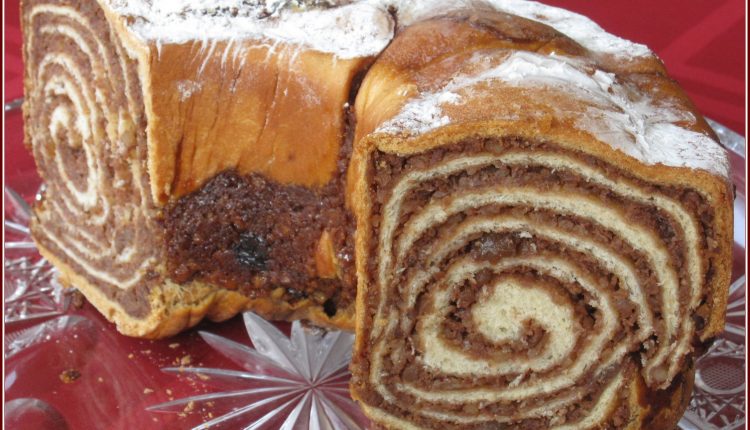The pope and Melania Trump had an awkward exchange about nut bread, and now we all want to try it
Small talk in big situations: It can be awkward.
So props to Pope Francis for trying to chat up first lady Melania Trump about potica, a baked specialty from her native Slovenia. And a big ol’ “we feel ya, girl” to Mrs. Trump, who seemed caught off-guard by the question, which took place Wednesday during President Trump’s visit to the Vatican. To further complicate the situation, it involved a translator.
According to accounts from such sources as the Associated Press and the Guardian, the pope gestured toward the president and asked something along the lines of, “What do you give him to eat? Potica?”
Now here’s where it gets interesting. Interpretations of the scene differ, though it seemed that at least momentarily the first lady thought the pope was talking about pizza. The AP concluded that she eventually caught on and said, “potica, ah yes,” while the Guardian suggested she said “pizza.”
The Internet then had some fun, naturally.
Regardless, we’re going to stick with potica, because it’s a heck of a lot more interesting than pizza. It’s also apparently a favorite of the pope, who, according to the AP, routinely talks to Slovenian visitors about it.
But what exactly is potica (pronounced poh-TEET-sah)?
“It’s kind of a sweet bread,” most commonly made with a walnut filling, said Borut Zunic, who works at the Slovenian embassy in Washington. “It’s very traditional.”
[How to make the best doughnuts you’ll ever eat]
You might also see it referred to as a cake. Consisting of a butter-and-egg-enriched yeast dough that is spread with a nut filling and then rolled up, potica might remind you of babka.
“We’ll have it for holidays or special occasions,” Zunic said, especially Easter, when the treat rivals eggs in terms of importance on the Slovenian table.
“Slovenia, it’s a small country, but it’s very diverse,” he said, meaning you’ll find many variations on potica. It might be shaped into a log or a round loaf with a hole in the middle. Besides walnuts, a sweet cheese-tarragon combo is a common filling, Zunic said. The Slovene National Benefit Society says other fillings might include chocolate, poppy seeds and hazelnuts.
Like a lot of yeasted breads, potica takes time and effort to make. That’s why even back in Slovenia, you’re more likely to grab one at the local bakery or grocery store.
“It’s a dying art,” said Bernadette Kovacic Fitzsimmons, president of the Olney, Md., Branch 108 of the Slovenian Union of America. Fitzsimmons, who helped edit “The Slovenian American Table,” a cookbook published in 2015 by the Slovenian Union of America (available by calling the group), said there are plenty of recipes out there that call for shortcuts, such as using a store-bought refrigerated dough, to make the process less demanding.
Still, as the daughter of two Slovenian immigrants, she’s determined to make everything from scratch, frequently alongside her mother. Slovenian cooks may keep a potica in the freezer to serve when guests show up, in addition to making it for the holidays. More often, it’s served as a snack, or maybe for breakfast. “It’s a little heavy for following a dinner,” Fitzsimmons said.
While her family adores potica (there’s a homemade loaf ready for her daughter’s high school graduation this week), it can be a bit of a harder sell for Americans, she said, because it’s not necessarily as moist as the cakes we tend to favor.
Source: https://www.washingtonpost.com


